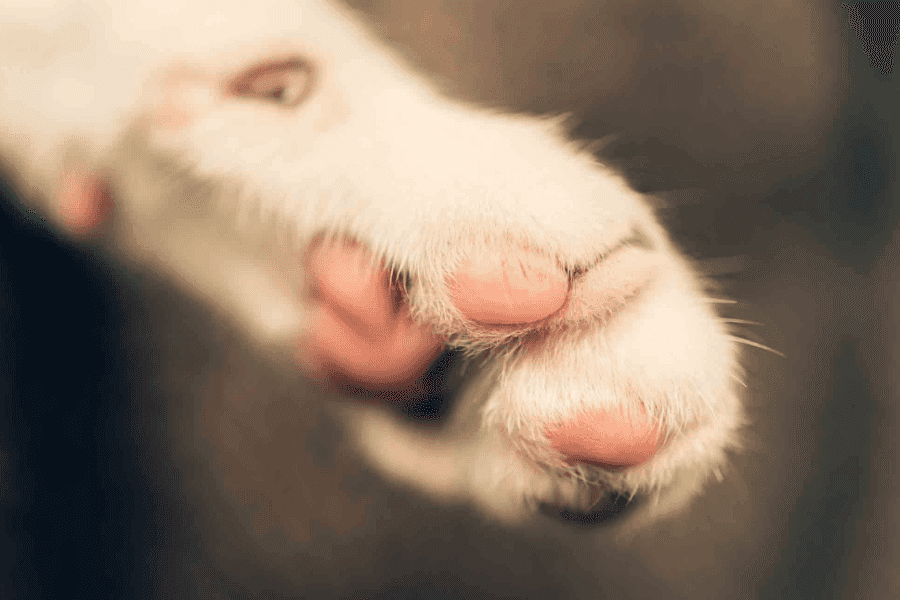Can You Get Cats Declawed? You Need To Know

Cat declawing is a controversial topic among pet owners. Some see it as an acceptable way to protect their furniture, while others view it as an inhumane procedure.![]()
So can you actually get your cat declawed? The short answer is yes, it’s possible, but there’s a lot more to consider before taking this permanent step.
In this post, we’ll dive into everything you need to know about cat declawing, including:
- What declawing entails
- The potential risks and side effects
- Alternatives to declawing
- The ethical debate around the procedure
- Declawing bans and regulations
We aim to provide an unbiased look at the facts so you can make an informed decision about what’s right for you and your cat. Let’s get into it!
What Does Cat Declawing Involve?

Declawing is not a simple procedure. It actually involves amputating the last bone of each toe, which is where the claw grows from.
For a human equivalent, it would be like cutting off each finger at the last knuckle. 😱
Vets perform declawing surgery under general anesthesia. The amputation can be done in a couple ways:
Scalpel/blade method - Using a scalpel or specialized blade, the vet cuts through the joint to sever the last toe bone.
Laser method - A surgical laser cleanly amputates the bone. This causes less bleeding but is more expensive.
After surgery, the wound is bandaged and the paws wrapped for protection. Stitches may be internal or external.
Recovery takes 1-2 weeks. Your cat will need an e-collar to prevent licking and chewing at the incisions. Pain medication is also prescribed for a few days post-op.
So in short - declawing is actual toe amputation surgery. It’s not a quick, simple procedure by any means.
What Are the Risks of Declawing Cats?

Because declawing surgery is so invasive, it carries many potential risks and side effects. Some of the main ones are:
✂️ Severe Pain
Declawing removes the entire last toe bone, along with ligaments and tendons. So even with pain medication, it is extremely painful during recovery.
Some cats continue to experience chronic pain long-term from things like:
- Nerve damage
- Early onset arthritis in the toes
- Abnormal regrowth of bone tissue
This chronic pain can cause serious behavior issues like litter box avoidance.
🩸 Serious Complications
Like any surgery, declawing has risks of complications like:
- Infection
- Excessive bleeding
- Bandages reopening from chewing
- Reaction to anesthesia
- Necrosis
In rare cases, severe complications can lead to partial or full toe necrosis, requiring additional surgeries.
🐾 Permanent Gait Changes
Without their claws, cats’ gaits change since they have to bear weight differently on their feet. This abnormal pressure can lead to:
- Chronic joint pain
- Early onset arthritis
Some cats refuse to walk on certain surfaces after declawing because it’s too uncomfortable.
😿 Lasting Behavior Issues
Research indicates declawed cats are more likely to develop lasting behavior issues like:
- Increased biting/aggression
- Not using the litter box
- Anxiety
- Withdrawing from humans
This is often linked to chronic pain. Declawed cats may also feel defenseless and stressed without their claws.
⛔ Increased Outdoor Risks
Declawed cats should be kept indoors since they can’t defend themselves or climb to escape predators if they get outside.
But accidents happen, and declawed cats loose outdoors are in grave danger since they lack weapons.
As you can see, the potential downsides of declawing are extensive. It’s a tradeoff between protecting your furniture and permanently impacting your cat’s health.
Are There Alternatives to Declawing?

Luckily, there are several effective alternatives to declawing that don’t involve surgery:
💅 Nail Caps
Nail caps like Soft Paws glue over the nail to blunt the scratching. They last 4-6 weeks before falling off when the nail sheds.
Though not permanent, they protect your furniture without harming your cat!
🪚 Regular Nail Trims
Trimming your cat’s nails every 10-14 days removes the sharp tip they use to shred things. Just be careful not to trim too short!
Ask your vet for tips on proper nail trims.
🐈⬛ Training
You can train cats to scratch appropriate surfaces instead of furniture. Use treats and catnip spray to entice them to scratching posts and pads placed near problem areas.
Deterrent sprays and double-sided tape can also discourage furniture scratching.
🏡 Cat-Proofing
Protect your belongings by keeping curtains closed, covering furniture, and placing appealing scratchers nearby.
Upholstery repair kits can also fix any minor damage.
😽 Enrichment
Make sure your cat has enough enrichment and activities to expend energy on instead of destructive scratching.
Rotate interactive toys to keep them engaged. Cat trees, play tunnels, and walls mounts allow healthy scratching.
With some work, you can curb inappropriate scratching without resorting to declawing surgery. Protect your possessions while keeping your cat happy and healthy.
The Ethical Debate Around Declawing

Views on declawing are shifting as more research reveals its negative effects. Let’s look at some of the main ethical points:
🐾 It Removes a Natural Defense
Claws are a cat’s first line of defense. Taking this away leaves them vulnerable, especially if they escape outside.
Scratching is also territorial - removing this form of communication stresses some cats out.
🩸 It Alters Natural Conformation
The removal of a digit bone impacts how a cat’s paw functions. This can cause chronic pain and arthritis over time.
Their gait changes since their weight is distributed unnaturally without the ends of their toes.
😿 It Often Leads to Problems
Study after study links declawing to increased undesirable behaviors, many stemming from pain.
Litter box avoidance, biting, anxiety and aggression are some issues noted in declawed cats.
😾 Less Invasive Alternatives Exist
Unlike spay/neuter surgery which improves health, declawing provides no medical benefit to cats.
And viable alternatives like trims and caps exist which don’t require amputation surgery.
🐈⬛ It’s Already Banned Many Places
Over 25 countries have banned elective cat declawing as an unethical procedure that harms cats’ welfare.
Some U.S. states are starting to follow suit with partial and full bans.
Ultimately, declawing removes an integral part of a cat purely for human convenience. The surgery often causes more problems than it aims to solve.
For these reasons, declawing is increasingly being viewed as unethical by veterinarians, lawmakers, and devoted cat owners.
Where is Cat Declawing Banned?

Here’s a quick look at where elective cat declawing has been outlawed:
🇪🇺 Across Europe
The UK, France, Germany, Austria, Switzerland, Portugal, Sweden and many other European nations have banned the procedure as cruel and unnecessary.
🇨🇦 Canada
All Canadian provinces prohibit elective cat declawing. It can only be done for medical necessity under rare circumstances.
🇦🇺 Australia
Declawing cats is illegal across Australia unless it’s required for a medical condition. Doing it for human preference reasons is banned.
🇺🇸 United States
New York was the first U.S. state to ban elective declawing in 2019. California soon followed. Other states are considering restrictions too.
Several California cities like Los Angeles, San Francisco, Berkeley, Beverly Hills and Santa Monica specifically prohibit cat declawing.
So in summary - declawing bans are gaining momentum worldwide and across America!
When Might Declawing Be Okay?

There are a very few scenarios where cat declawing may be deemed acceptable:
👶🏻 Protecting Immunocompromised Family
If you have a family member with an impaired immune system, declawing might lower the risk of infections from scratches.
But this should only be considered after exhausting all other options to manage scratching behavior.
🐈⬛ Rare Medical Necessity
In very rare cases, chronic infections, injuries or abnormalities affecting one or more toes might warrant declawing for medical reasons.
But this would be done to relieve pain and improve overall welfare - not for human preference.
Unless your cat faces medical conditions like these, declawing should always be avoided in favor of humane alternatives.
Questions to Ask Your Vet About Declawing

If you’re still considering declawing your cat, it’s crucial to discuss the procedure thoroughly with your vet first.
Here are some important questions to ask:
- What exact methods do you use to declaw?
- What kind of pain management is provided?
- What is the complication rate you see for the procedure?
- How long is the typical recovery time?
- What are the potential long-term risks?
- Do you feel the benefits outweigh the risks in my individual cat’s case?
- What alternatives do you recommend we try first before surgery?
A good vet will want to exhaust all other options before resorting to declawing. They’ll also give you an honest assessment of the risks versus benefits.
If your vet seems quick to recommend declawing without consideration for alternatives, seek a second opinion.
The Bottom Line on Declawing Cats
Here’s the takeaway if you’re debating cat declawing:
While declawing may solve furniture scratching, the surgery comes with lifelong risks that impact your cat’s health and behavior. There are multiple effective alternatives that protect both your possessions and your pet.
We always recommend avoiding declawing since it goes against a cat’s natural conformation. But talk to your vet if you have extenuating circumstances.
With some training and deterrents, you can curb furniture scratching without harming your beloved cat. Protect your home while letting your feisty feline keep their claws!
Tags
Share
Table Of Contents
Related Posts
Quick Links

